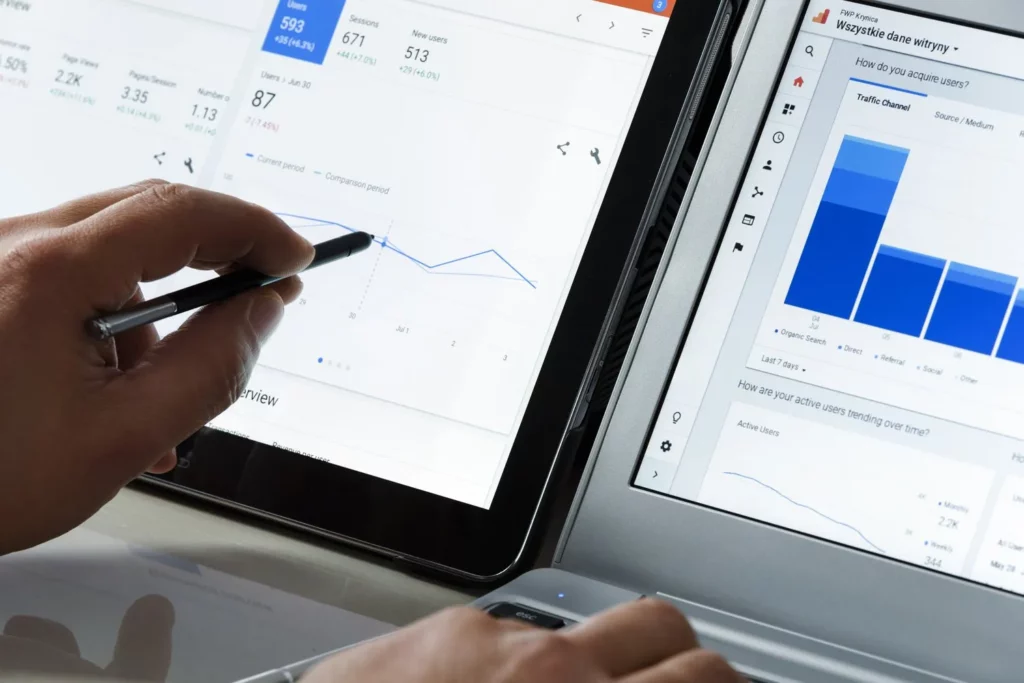Google Spreadsheet Functions
Google Sheets allows users to edit, organize, and analyze different types of information. It allows collaborations, multiple users can edit and format files in real-time, and any changes made to the spreadsheet can be tracked by a revision history. Google spreadsheet functions are an ideal tool for businesses or groups who need to manage complex data sets. Let’s get started learning how to use Google Spreadsheet functions today.
In overview, here is how to use Google spreadsheet functions.
To use any of these functions in Google Sheets, you just need to type in a formula. A formula begins with an equals sign (=) followed by the name of the function you want to use. To make sure that everything works correctly, you need to make sure that the function is followed by its required parameters, which are typically in parentheses.
Benefits of using Google Sheets
– The ability to track changes: As mentioned above, one of the major benefits of using Google spreadsheet functions is the ability to see who has made what changes to a document, and when they made those changes. This can be extremely helpful for businesses who need to keep track of their data, and for groups who need to collaborate on projects.
– Real-time collaboration: Another great benefit of using Google Sheets is the ability to collaborate in real-time with other users. This means that multiple people can work on a document at the same time, and see each other’s changes as they happen. This can be a huge time-saver and can make working on projects with others much easier.
– The ability to use different types of data: Google Sheets is not limited to just text data. It can also be used to work with numerical data, images, and even charts and graphs. This makes it a very versatile tool that can be used for a variety of different purposes.

How to use Google Spreadsheet Functions
There are many reasons to use Google spreadsheet functions. First and foremost, it is powered by Google’s machine intelligence, which means that it can do a lot of the difficult tasks for you when it comes to data analysis.
You can ask a question about your data and Sheets will return an answer using natural processing. Sheets also builds charts, suggests formulas and creates pivot tables for you. All of these features make it an incredibly powerful tool for anyone who needs to work with data.
Here are some examples of Spreadsheet Functions that can be useful.
Common features of Google Spreadsheets
1. Editing. One of the key features of Google Sheets is that it allows collaborative editing of spreadsheets in real-time. This can be extremely helpful when working on projects with others, as it ensures that everyone is on the same page and can make changes as needed.
2. Explore. Another helpful feature of Google Sheets is the Explore function. This allows users to quickly and easily find trends and patterns within their data. This can be extremely helpful when trying to make sense of large amounts of data.
3. Offline editing. Another great feature of Google Sheets is that it offers offline editing. This means that users can continue working on their spreadsheets even if they are not connected to the internet. This can be extremely helpful when working in areas with poor or no internet connection.

There are many different types of functions available in Google Sheets, each with a different purpose. By knowing how to use Google spreadsheet functions, you can perform mathematical operations, manipulate text strings, or even fetch data from other sources.
Using functions is a great way to automate repetitive tasks in your spreadsheet. By creating a formula using one or more functions, you can save yourself the hassle of manually performing the same calculation every time you need it.
To use a function in your spreadsheet, simply type the function name followed by an open parenthesis. After you type the function name, Google Sheets will automatically insert the correct number of arguments for that function. Simply enter the values for each argument and then close the parenthesis.
For example, the SUM function takes up to 30 arguments and returns the sum of all the values you enter. To use the SUM function, you would type =SUM( followed by the cells that you want to add up, separated by commas. Finally, close the parenthesis with a ).
Google functions
Google offers a wide variety of Google spreadsheet functions that can be used to manipulate data in a variety of ways. Here are some of the most commonly used functions:
– VLOOKUP: This allows you to look up values in a table based on a lookup key.
– INDEX: Returns the value at a given index in a range or array.
– MATCH: Looks up a value in a given range or array and returns the relative position of that value.
– COUNT: Counts the number of cells in a given range that contain values.
– SUM: Adds the values in a given range or array.
– AVERAGE: Calculates the average of the values in a given range or array.
– MAX: Returns the maximum value in a given range or array.
– MIN: Returns the minimum value in a given range or array.
These are just a few of the many functions that Google Sheets offers. For more information on how to use Google spreadsheet functions, check out the Google Sheets help center.
Did you enjoy this blog? Check out our blog on How to get Google Ads Invoice.


